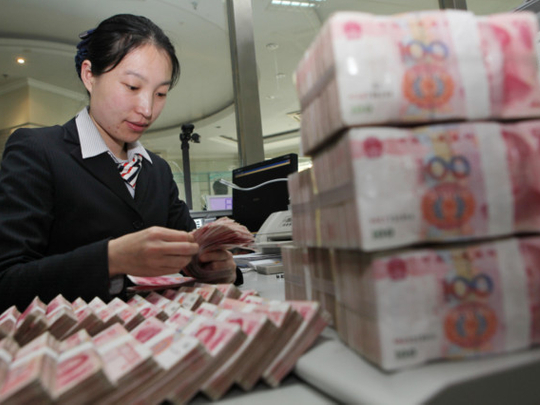
The US dollar has been the world’s number one trade and reserve currency for more than a century, but this status is probably going to end soon. A report issued by the World Bank on April 29 says China’s economy is likely to overtake the US economy in size as early as in 2014, having already reached 87 per cent of the US GDP in purchasing power parity terms. Given the rapid growth of China — the country’s economy is expected to grow by 24 per cent in the period 2011-14 as compared to the forecast for the US of 7.5 per cent — it will surpass the US this year.
China’s financial liberalisation, i.e. the internationalisation of the renminbi, goes hand in hand with this. The process, which started around 2010, will take five to ten years to complete, experts say. By then, the global importance of the renminbi should be large enough to make it a fierce competitor to the dollar.
Fitting challenge
“Due to the size of China’s economy and its importance in global trade and, potentially, finance, the renminbi might ultimately come to challenge the US dollar. If it can do so successfully, it might one day become a leading reserve currency,” said Yves Mersch, Executive Board Member, European Central Bank, in a recent speech at a conference on the renminbi in Luxembourg.
The past few years have seen the complete opening up of renminbi trade settlement, the availability of renminbi clearing services at select financial centres worldwide, the establishment of renminbi swap lines with other central banks, and the proliferation of offshore renminbi-denominated bond markets. Since 2010, when the renminbi was made available for forex trading, daily trading volumes grew fourfold to nearly $120 billion (about Dh440 billion) in 2013. Currency pairs involving the renminbi have become immensely popular.
The Chinese currency has come a long way since the country’s era of a command economy when it was pegged at distorted values in comparison to Western currencies. In 1981, when reforms under Deng Xiaoping began to build momentum, the official nominal exchange rate between the US dollar and the renminbi was 1:1.7. Later, China began to use swap centres to bring the exchange rate to more realistic levels. As of this month, the exchange rate hovers between 6.22 and 6.25 to the US dollar.
Still in control
But experts emphasise that the renminbi is still a closely controlled currency and as such does not reflect real market conditions. It is currently allowed to rise or fall by only 1 per cent in either direction from a level fixed against the US dollar each day by China’s central bank.
Presently, the renminbi is also only convertible on current accounts and not capital accounts, and while more banks are offering offshore deposits and trading accounts for the renminbi, it remains a virtual currency for non-Chinese investors.
“There is no physical deposit of any renminbi amount or any physical delivery of the currency to offshore accounts,” a spokesperson for the Monetary Authority of Singapore tells GN Focus. “Withdrawal of renminbis outside China is not possible either.”
However, this is not holding individuals and traders back from investing in the currency. Singapore, which aims to position itself as a major global renminbi trading hub alongside Hong Kong and Taiwan, has already overtaken London as a renminbi clearing centre. The value of Singapore’s renminbi deals grew by 375 per cent between March last year and this year, making Singapore the largest hub for renminbi payments in value (excluding China and Hong Kong).
In trade finance, the renminbi overtook the euro as the second-most used currency by the end of 2013, according to the Society for Worldwide Interbank Financial Telecommunication. It pointed at the rapid pace at which China’s importers and exporters are using renminbi letters of credit.
In a recent note, HSBC said that businesses trading with China that fail to seize the opportunity of using the renminbi may be losing out to competitors. In a survey by the bank last year, 700 global businesses said they expect to use the renminbi in trade settlements in the next five years.
The current slowdown in the Chinese economy may have a stimulating effect on the internationalisation of the renminbi, with the government in Beijing showing determination in reconsidering monetary policy and making it more flexible so as to become a free-floating currency.
HSBC expects the renminbi to become one of the top three global trade currencies in volume by next year. In a March analysis, Qu Hongbin, Chief China Economist, HSBC, said, “We expect full renminbi convertibility to come probably in the next two to three years. This will allow bigger quotas for overseas investors, freeing outward direct investment, easing rules on foreign ownership of banks and lifting the ceiling on individual currency purchases.”











